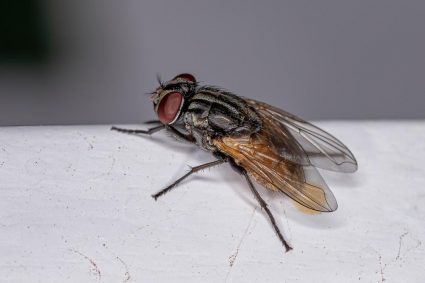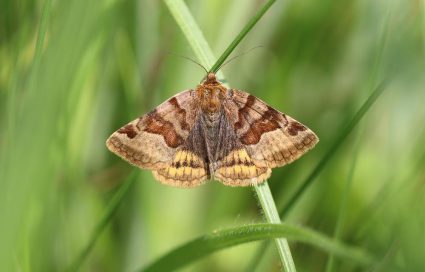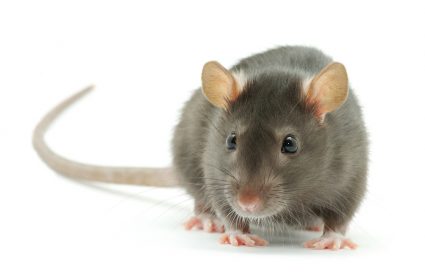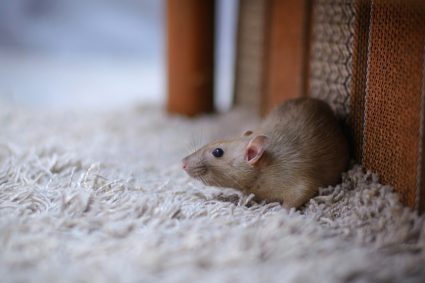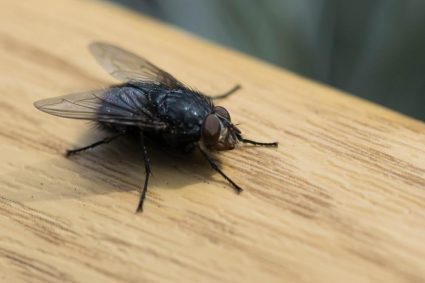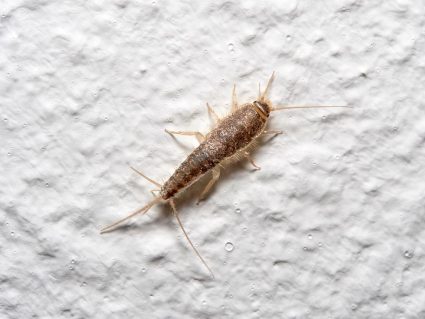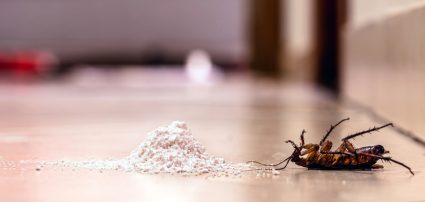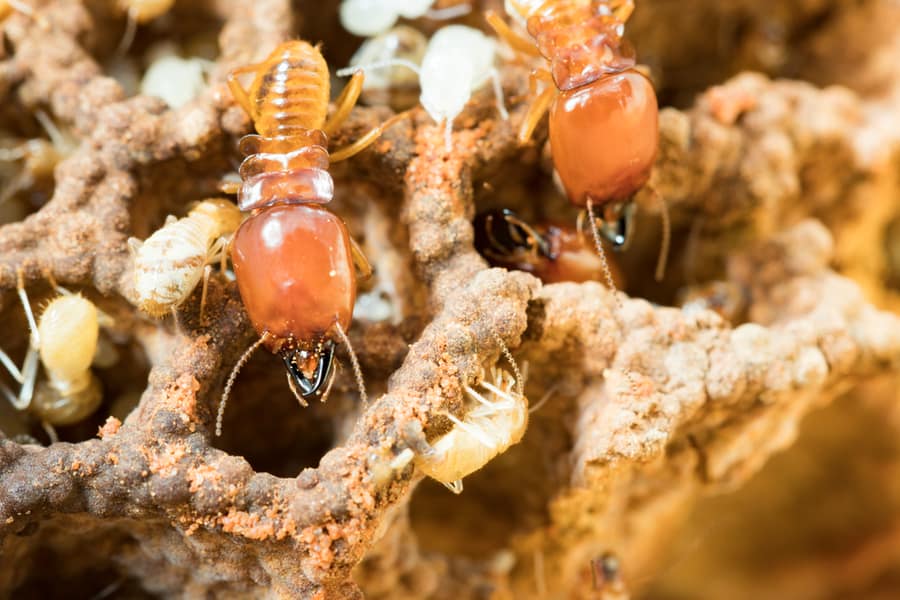
All the excitement of moving into a new home turned into horror. Almost a year later, we discovered that termites were starting to invade our precious homes.
We had emerged victorious in dealing with minor bug problems in the past, but this was a much bigger issue, requiring us to consider solutions beyond our capabilities.
Considering how threatening the presence of termites in our house was, we decided to hire a professional exterminator to nip our termite problem in the bud before they dug in and started calling our home their new lair.
The exterminator began with an inspection, devised an action plan, and started his work upon agreement.
In the end, we were happy that we hired a professional. Considering the risk we avoided, it saved us a lot of time and perhaps money.
Our research revealed how quickly a small infestation could turn into a huge issue, resulting in us hiring an exterminator service to eliminate the termites.
Pest exterminators use various methods to get rid of termites, depending on the scale of the termite infestation, including the following:
- Termiticide Barriers
- Termite Baits & Traps
- Beneficial Nematodes
- Spot Treatment
- Fumigation
Let’s look at how we identified termites and the level of our termite problem, the preventive measures we took against termites, deciding between home remedies vs. hiring an exterminator, and how the exterminators got rid of the termites for good.
7 Ways To Identify a Termite Infestation
The first step in addressing a termite problem is by identifying the presence of termites.
Any homeowner should know, considering the damage termites can cause to structures and how difficult it can be to terminate them if not identified early.
I must give props to my wife for spotting them early, especially considering how difficult they are to pinpoint in the early stages of an infestation.
1. Evidence of Swarming
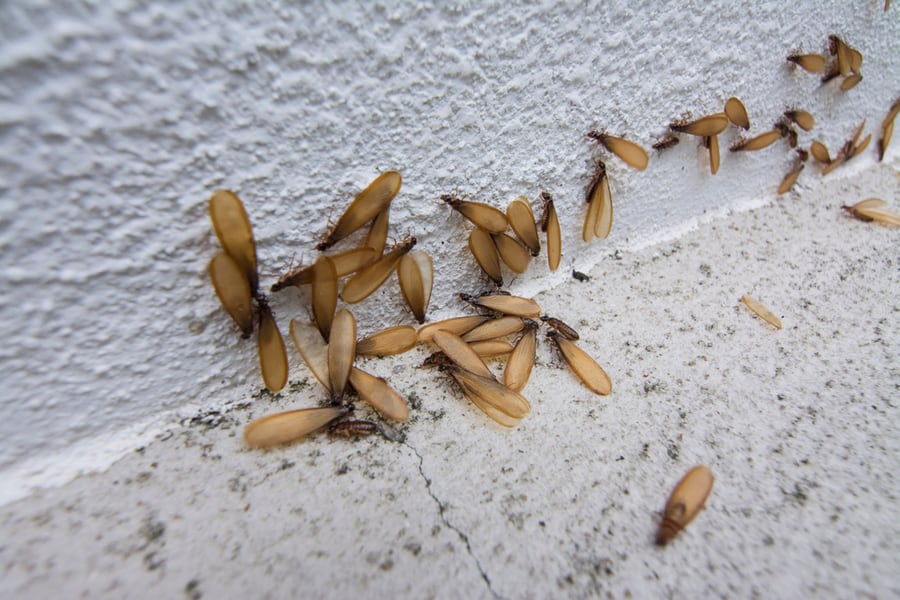
Subterranean termites shed their wings when they start working on a new colony. The presence of piles of scattered wings is a sign that termites have moved into a building.
2. Tubes of Mud

Termites use mud tubes to connect their food sources, primarily wood, to the soil. These tubes, made of wood and dirt, can be as wide as a pencil.
Spotting them is a telltale sign of a termite infestation.
However, the absence of mud tubes does not guarantee a termite-free home since dry wood termites do not build these “highways.”
3. Strange Clicking Sounds
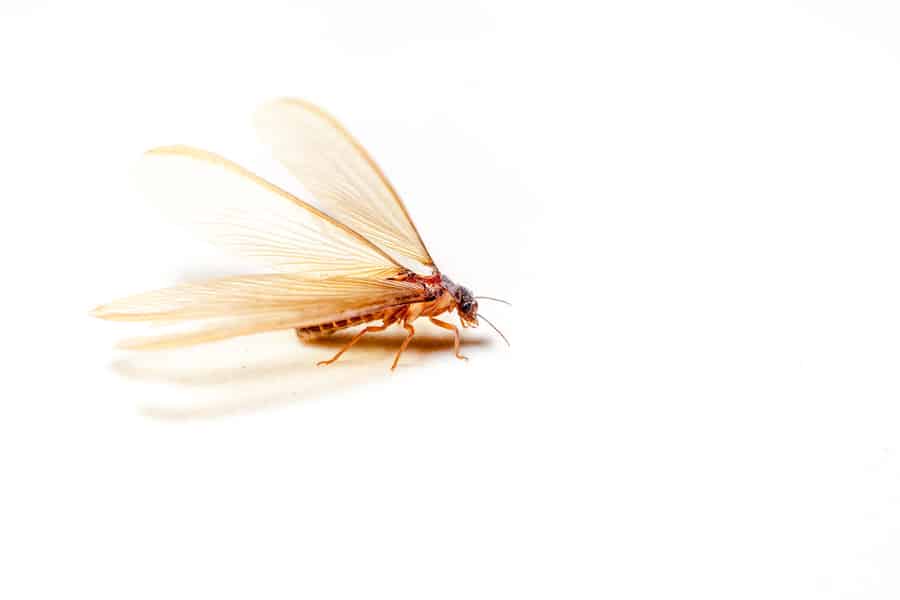
Termites shake their bodies and bang their heads against the wood as a warning sign when they sense a threat.
Detecting these head-banging sounds is an excellent way to identify the presence of termites.
4. Frass or Termite Droppings
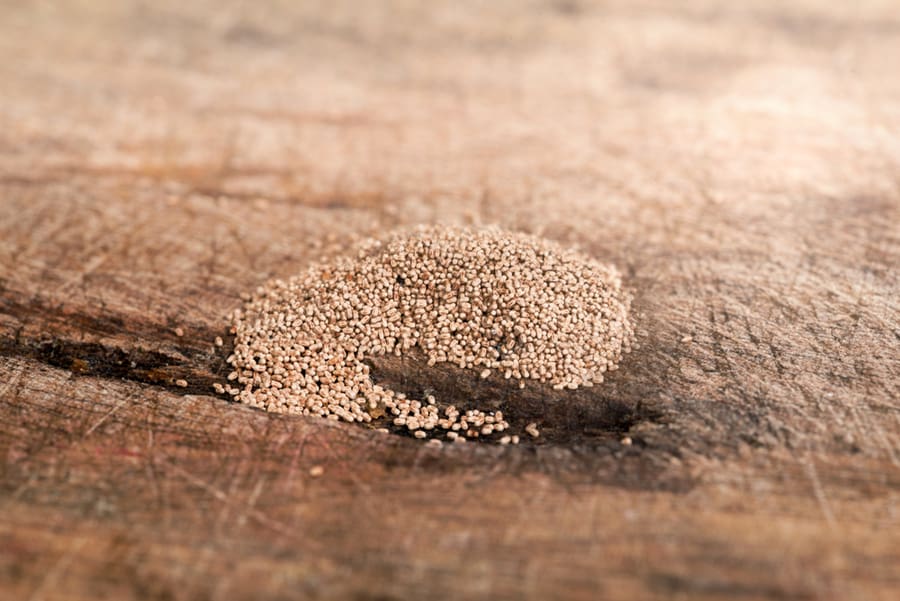
Termites leave behind perforated wood produced and droppings, forming mounds of tiny, granular pellets.
Routinely checking door frames, windowsills, baseboards, and other wooden surfaces for frass or termite droppings is an excellent way to identify the existence of termites.
5. Spotting Live Termites
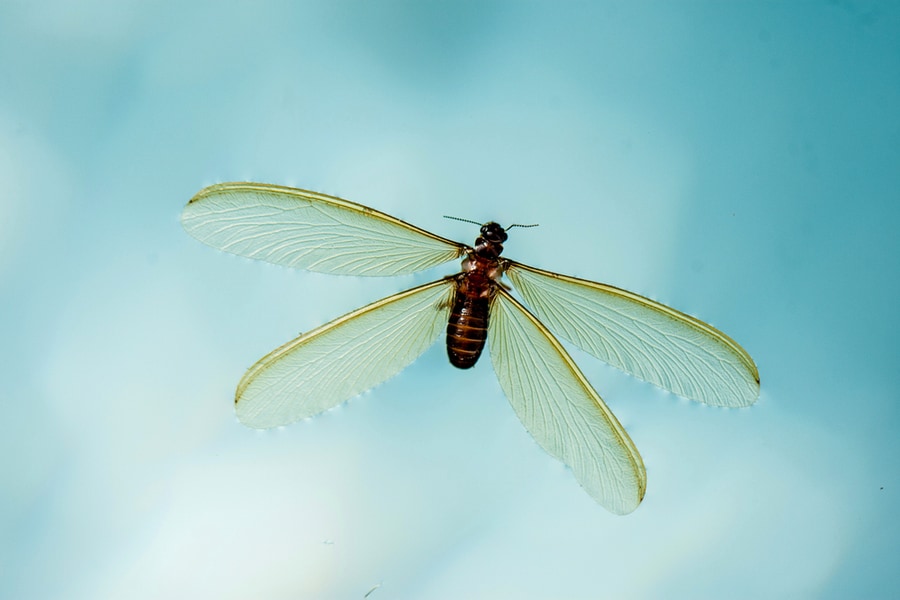
Termites sometimes cross paths with humans, although they try to keep themselves to mud tubes or soil. Rare sightings are often mistaken as flying ants too.
The best way to tell them apart is by identifying the even-sized rear wings, thick bellies, and straight antennae of termites.
Flying ants, in comparison, have rear wings of varying sizes, thinner abdomens, and ben antennae.
6. Tiny Holes on Wooden Surfaces
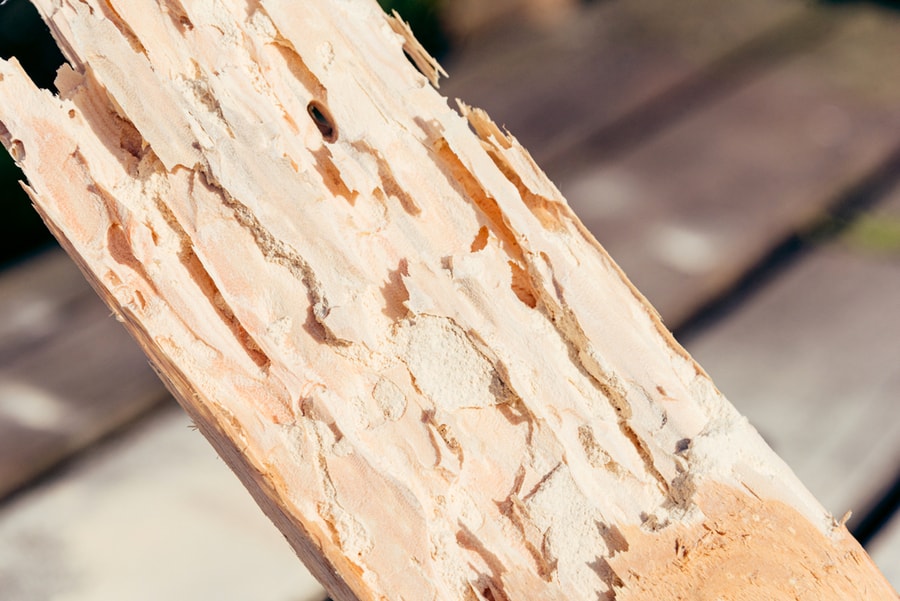
Boring insects create tiny holes to drill into the wood. In tandem with a few other signs of termites, spotting such holes can help identify termite activity.
7. Bubbling or Peeling of Paint
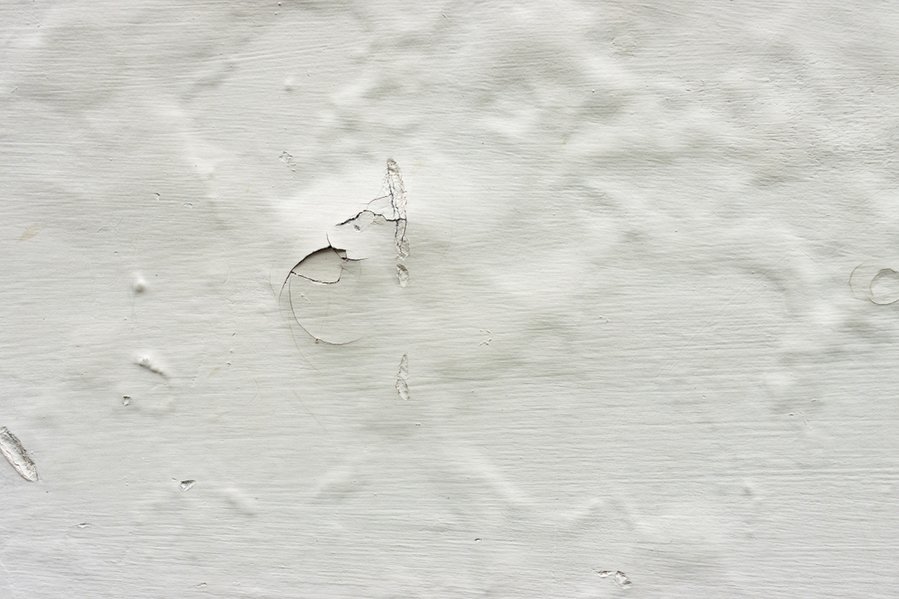
Termite damage in drywalls results in moisture entering between the wall and the paint. This causes layers of paint to bubble or peel.
While it may be a sign of termites damaging a wall, various other factors can cause this effect on the paint.
As a result, this sign must be spotted alongside a few other signs of termite trouble to be sure of a termite infestation.
What Termites Look Like
A few species of termites are found in the United States: the Subterranean Termite, Drywood Termite, and Dampwood Termite.
Identifying what type of termites are present is essential since the ways of terminating different species vary.
Subterranean Termites
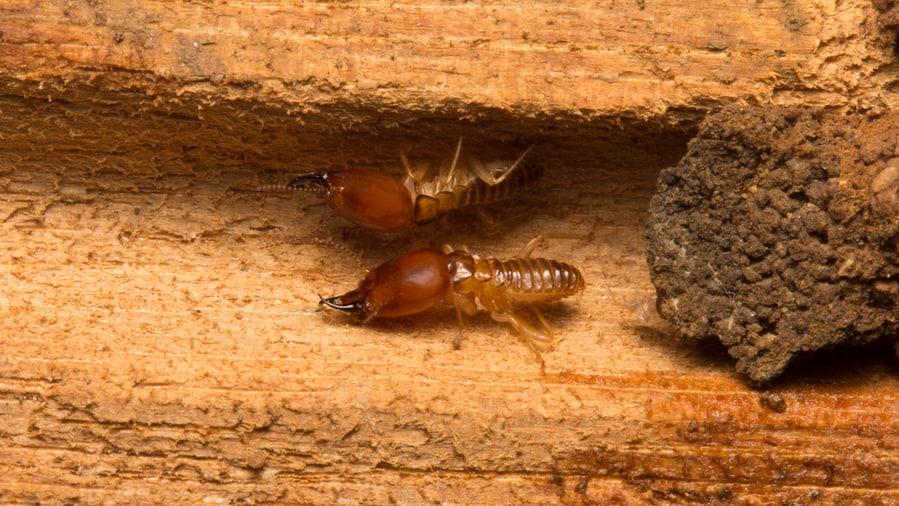
This is the most common and potent termite species in the U.S. These guys munch on wood and nest in soil using mud tubes for travel.
Subterranean termites usually cause more damage than other termite species, with their strong jaws and saw-like teeth enabling them to eat away a structure until it collapses.
The color of subterranean termites depends on their caste. Both workers and soldiers have cream-colored bodies, the only distinction being the brown heads of soldier termites.
Momma termites are either black, brown, or creamy white. A colony of these termites can contain between one lac to one million termites.
Drywood Termites
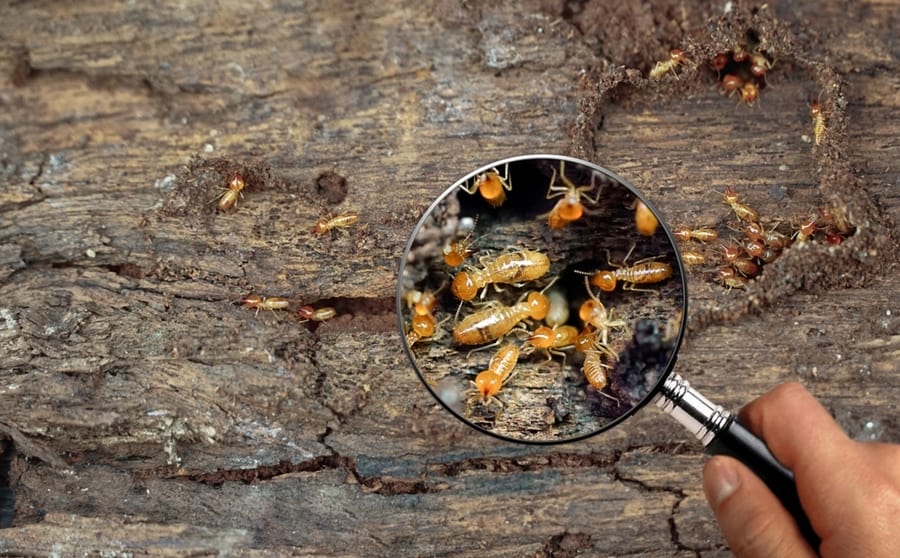
Although Subterranean Termites need contact with the soil for survival, Drywood Termites can do without it. As a result, they don’t build mud tubes.
They are usually found in warm coastal areas. Drywood termites are generally red or brown.
They fly in swarms to dry wood, their favorite food, and nest there with a colony holding up to 2,500 termites.
Dampwood Termites
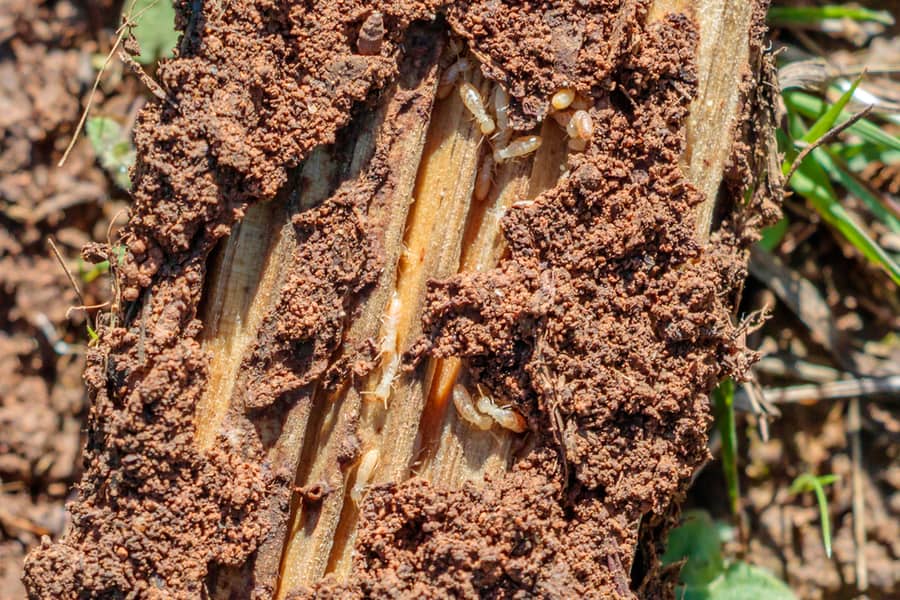
This type of termite needs frequent contact with water for survival. As a result, Dampwood Termites are usually limited to wet or coastal areas.
They feed on damp wood. As a result, they are often spotted in outdoor structures with plenty of moisture.
Dampwood termites are larger than their Subterranean or Drywood cousins.
They have a yellow or tan complexion. A colony of damp wood termites can contain several thousand inhabitants.
How to Prevent Termites
Preventive measures against termites can save a lot of emotional strain, trouble, time, and money. We found it easy to keep them away by eliminating their basic requirements for survival.
Therefore, preventing humidity and moisture, and protecting wood, their food source, are the best ways to prevent termite infestations.
1. Prevent Wood From Touching the Ground
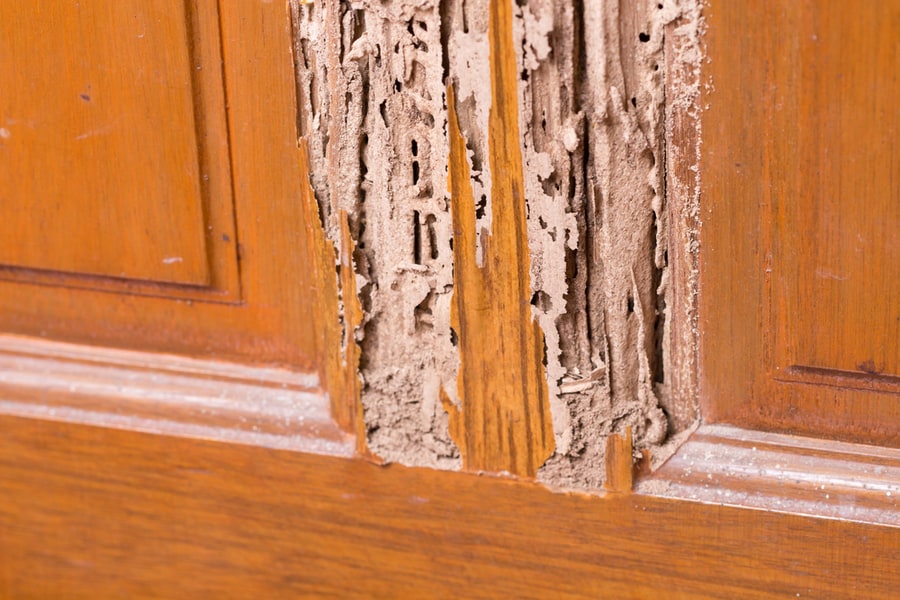
Subterranean termites make their way to wood from the soil using mud tubes. They nest in the ground, which means they need that connection for survival.
Keeping wooden surfaces from coming into contact with the earth is an effective way of keeping them away.
I inspected our home, especially the foundation, and ensured that termites didn’t have a way to travel from the soil to the wooden surfaces in our house.
2. Maintain a Dry Home
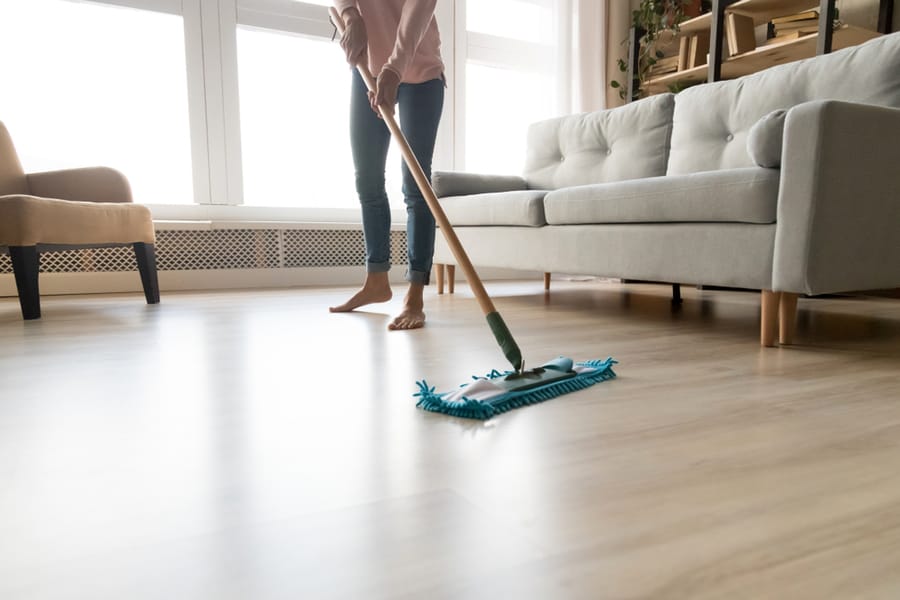
Repairing leaks and maintaining a dry home is a great way to minimize the chances of termite problems. We paid extra attention to our roofing and air conditioners.
Blocked gutters and pipes provide excellent hiding places for termites with dark, moist, and warm surroundings.
As a result, we made it a point to routinely clean gutters and pipes.
Homeowners with basements need to pay extra attention to this step since basements are notorious for damp walls and floors.
3. Keep Perimeters in Check
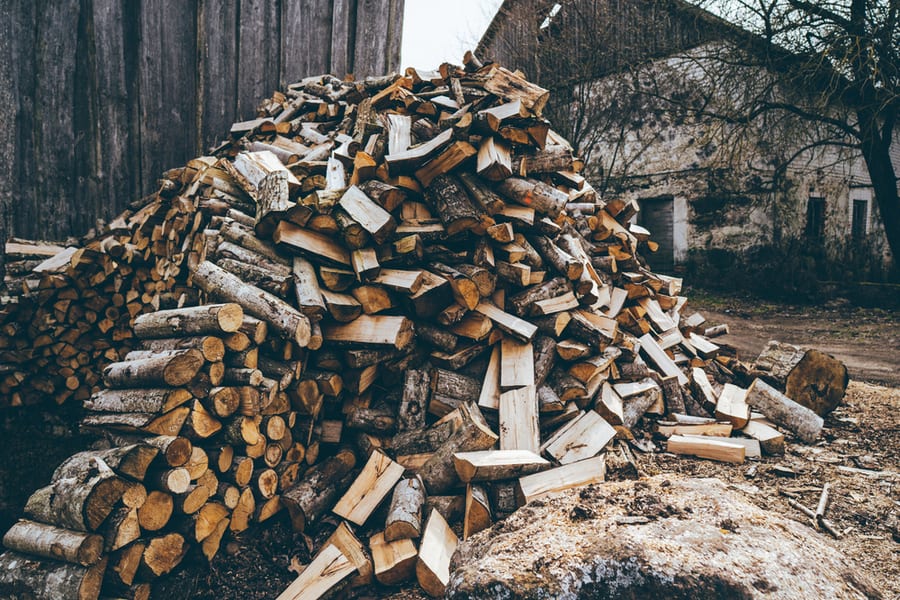
Moist wood left outside, such as stacks of firewood and tree stumps, attracts termites and later transfers them onto houses.
Wooden surfaces should have a six-inch gap from the ground, including decks or patios.
Using termite-proof wood for outdoor structures, especially ones that connect to the house, is an excellent way to keep termites away.
4. Use Mulch Carefully

Some mulch contains all the ingredients termites need for survival, including soil and wood.
Use alternatives made of gravel or rubber to stop attracting termites.
5. Make Regular Inspections

Keep an eye out for things that attract termites to wooden structures. Anyplace connected to the soil with moisture and wood can easily attract termites.
DIY Remedies vs. Hiring an Exterminator
I was ready to take the bull by the horns upon learning that we had a termite problem in our house, coming up with a list of home remedies, such as using essential oils, various sprays, and DIY termite baits.
However, I wasn’t comfortable losing valuable time experimenting with home remedies.
We knew that we had caught the infestation in its early stages.
However, there was a risk of us being wrong. We also knew that the problem could soon worsen into something serious, damaging the structural integrity of our home.
As a result, we decided to go ahead with the safe option and consult an exterminator.
How Exterminators Eliminate Termites
In hindsight, consulting a good pest control service to get rid of the termites living in our house was the right call, especially considering how effective their solutions turned out.
The exterminators quickly analyzed the severity of the situation and started working on eliminating them. They were precise about their game plan from the get-go.
They walked us through their strategy while educating us about a range of options they could implement if our termite problem needed sterner measures later.
Some termiticides, chemicals, and fumes commonly used by exterminators can be highly toxic for humans and pets.
Therefore, it’s best to ask about the safety of substances used by exterminators, ensure that they follow label directions when using toxins, and support the exterminator by carefully following the prescribed safety guidelines.
1. Using Termiticide Barriers

Exterminators use potent termite treatment around the perimeter of our house, creating a deadly barrier for termites.
The termites don’t know about the termiticide’s toxicity, so they will die if they choose to invade the barrier and eat away at the material in it.
Additionally, when a termite comes into contact with termiticide, it unknowingly spreads it to other termites.
Soon enough, the termiticide virus will spread throughout the colony, ending its existence.
2. Using Termiticide Foam
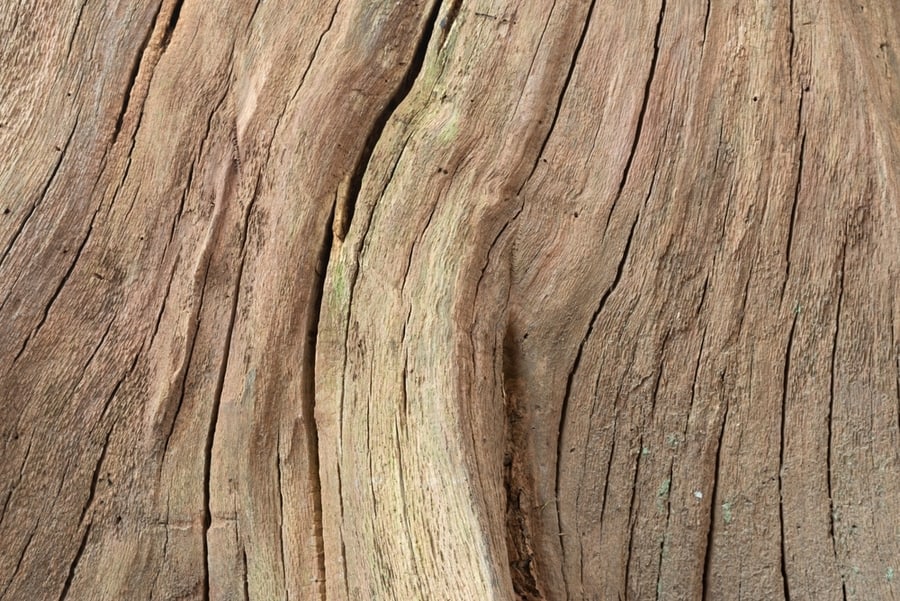
Termiticide foam is applied in hiding places of termites, such as crevices, cracks, and voids.
It expands upon application and evaporates shortly, leaving a residue that lasts for about a month.
Any termite that comes into contact with this residue will die, including ones that touch the poisoned ones.
3. Setting Termite Baits
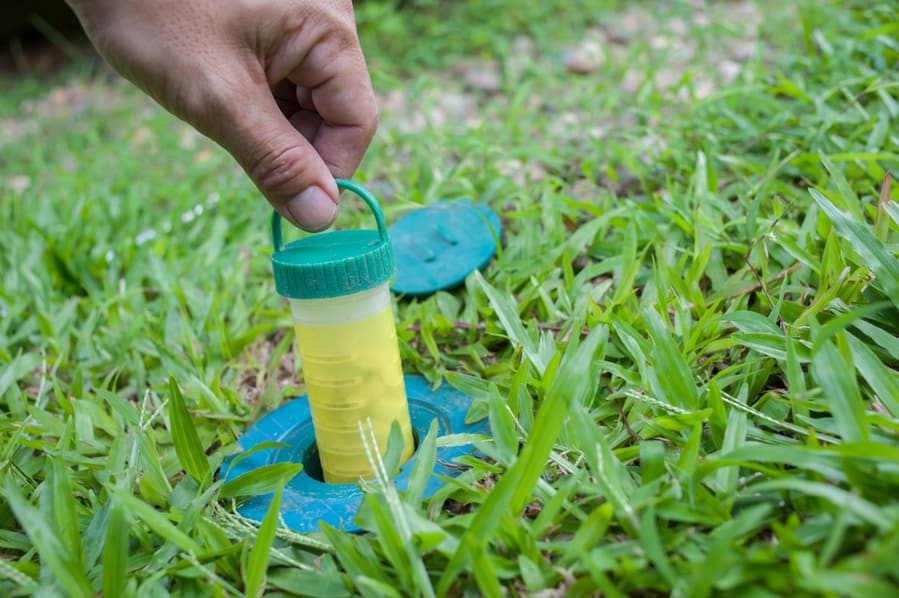
The exterminators installed termite baits around the foundation of our house. Termite baits attract and infect any termite that comes into contact with it.
The toxins in termite baits act slowly, interrupting poisoned termites’ growth, eventually leading to their death.
These delayed-action toxins also give poisoned termites ample time to infect other termites, finally taking down the entire colony.
4. Releasing Beneficial Nematodes
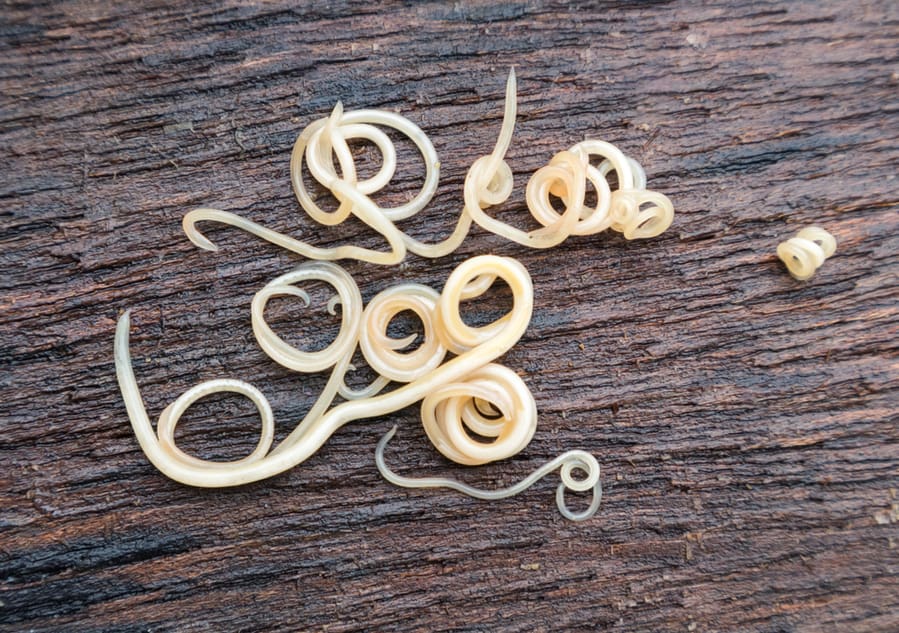
These beneficial parasites work against many common pests, including termites.
These microscopic roundworms burrow into termites’ bodies and release toxic bacteria into the termite’s bloodstream, killing them in a matter of days.
Using beneficial nematodes is a common practice among exterminators and gardening enthusiasts.
It’s available online or in gardening centers. A mixture containing the nematodes mix, potting soil, and cold water is applied to infested areas.
5. Spot Treatment

Exterminators use this method to eliminate Drywood Termites dwelling within wooden walls.
They start by drilling holes every 10 inches on the walls suspected to be infested.
Then they insert termiticide into these walls to poison Drywood Termites and seal off the holes using putty or wood filler.
6. Using Fumigation
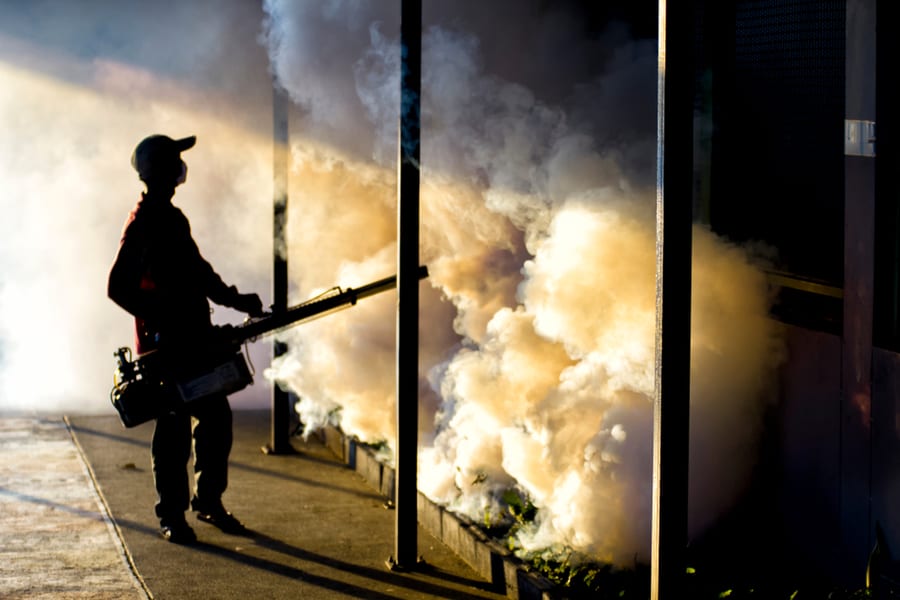
Exterminators use termite fumigation for severe or broad termite infestations in buildings.
Fortunately, our exterminator didn’t have to use this method, but I researched it anyway.
Exterminators use fumigation to effectively eliminate termites, especially in situations where infestations have spread throughout a structure, deeming other solutions ineffective or inefficient.
They start by surrounding the building or structure with a sealed tent, creating a bubble. Then they release a gas into the temporary bubble, killing any termites living within it.
The fumes penetrate through the smallest cracks and crevices, eliminating termites in hiding spots that are practically impossible to reach.
Fumigation usually takes up to 72 hours, depending on the severity of the termite infestation.
The toxic fumes used in fumigation against termites are unsafe for humans and pets. As a result, they need to vacate the premises before beginning the process.
Additionally, occupants must remove any food and medicine from the building or place them in sealed bags or containers to prevent contamination.
Clothes, curtains, bedding, and indoor plants must also be removed from the premises.
Summary
Exterminators employ various methods to get rid of termites, depending on the type of termite they are dealing with, the severity of the infestation, and various other factors.
There is endless evidence of termites severely damaging buildings, so they shouldn’t be taken lightly.
We were happy that we hired a pest control service without trying our luck with home remedies and DIY solutions, even after learning about the termite infestation in its early stages.
Overall, the exterminators did an excellent job assessing the situation and employing effective methods to make our house a termite-free zone.
Frequently Asked Questions
What is the fastest way to get rid of termites?
Applying termiticides, setting termite traps, releasing beneficial nematodes, and fumigation are the fastest ways to eliminate termites.
How hard is it to get rid of termites?
Eliminating termites can be challenging for the average homeowner since they are difficult to spot, reach, and control.
Termites can survive most DIY remedies and multiply, leading to damages, expenses, and inconveniences.
So, hiring a professional exterminator is best.
Can I get rid of termites myself?
There are many home remedies to eliminate termites, such as using vinegar, boric acid, nematodes, and wet cardboard.
However, these methods can unlikely resolve severe infestations or offer permanent solutions.
A colony of termites can survive anywhere in a house, especially in areas practically impossible to access.
Therefore, the recommended solution is to hire an exterminator to eliminate termites effectively and once in for all.

